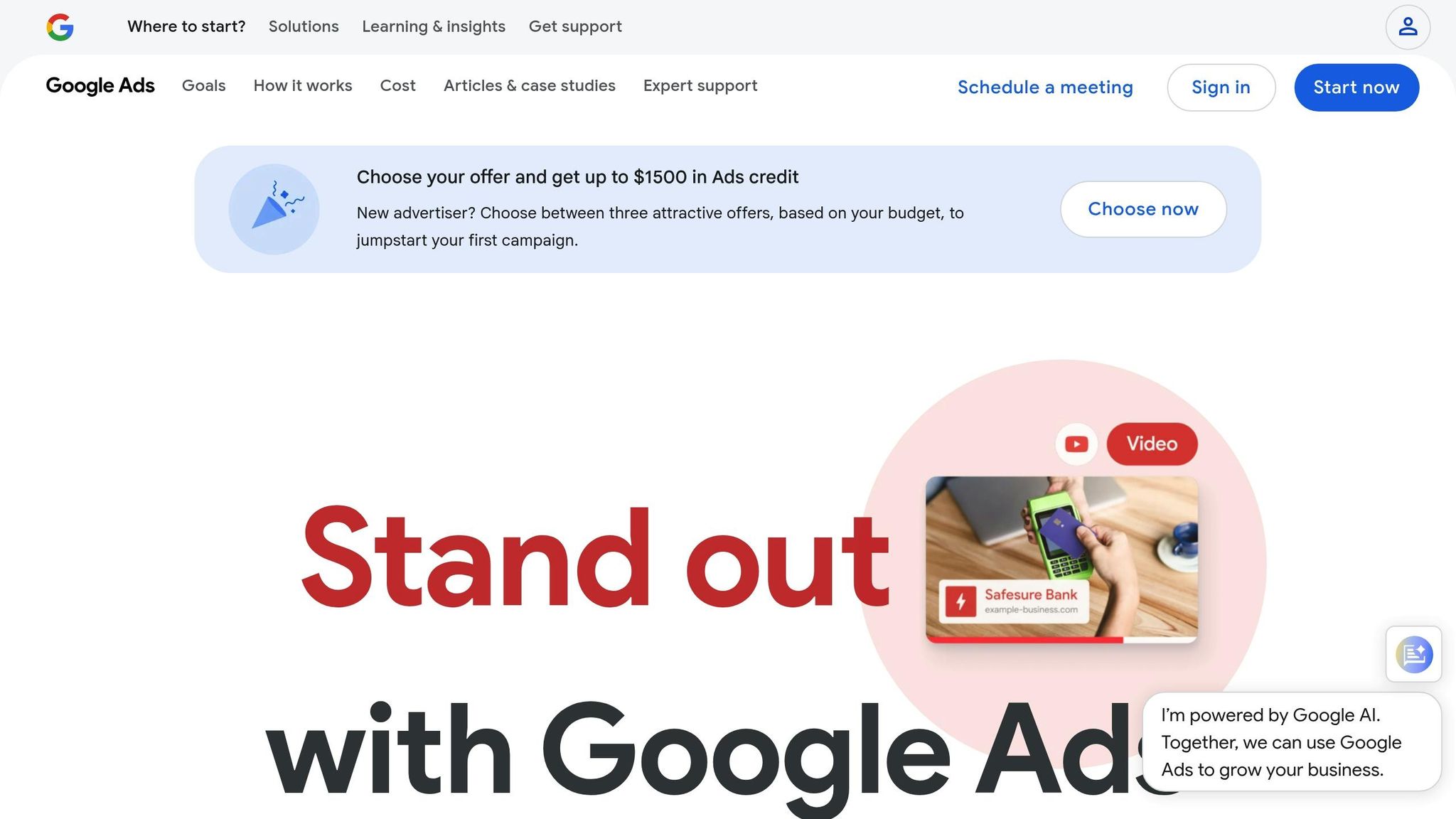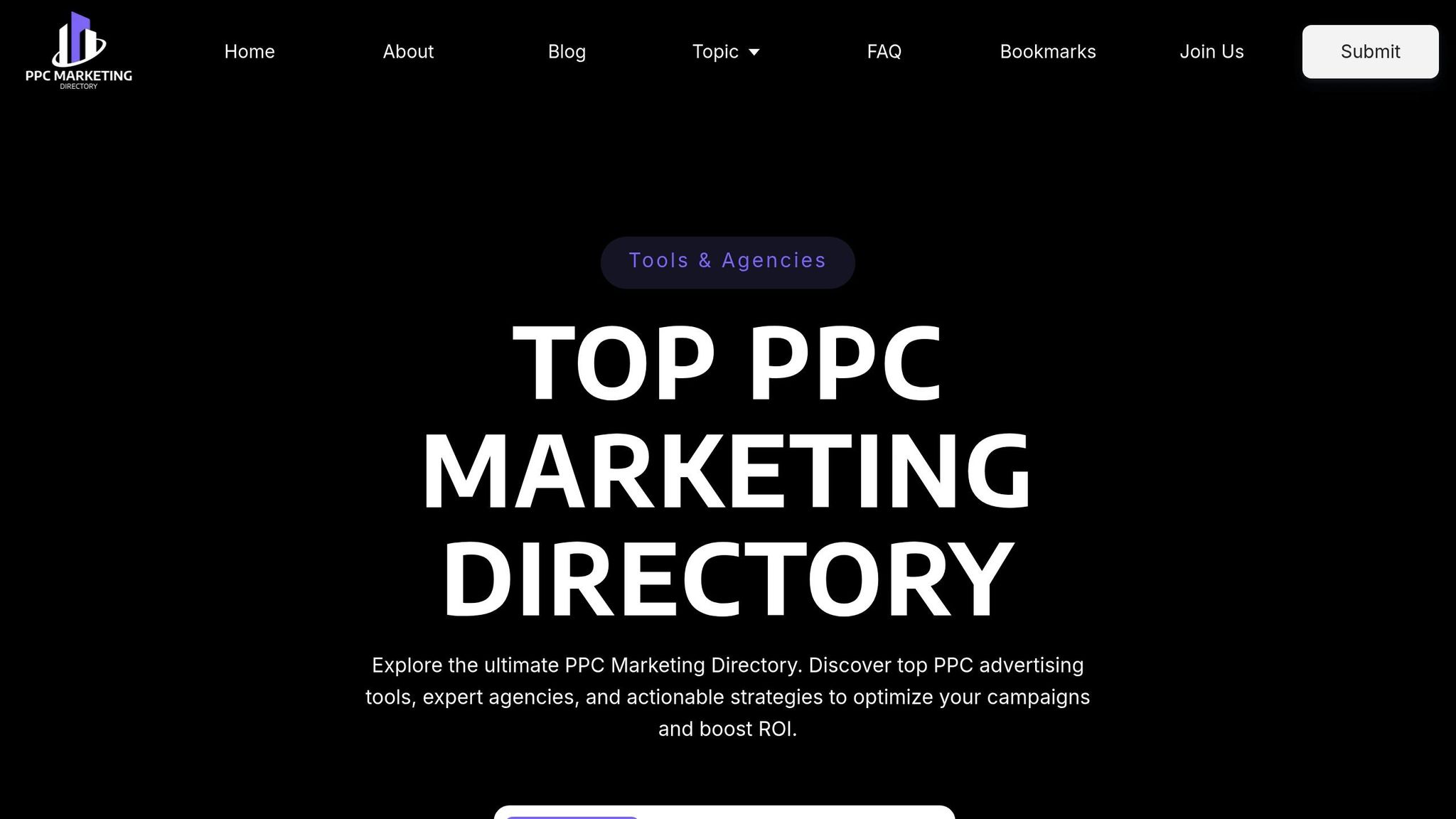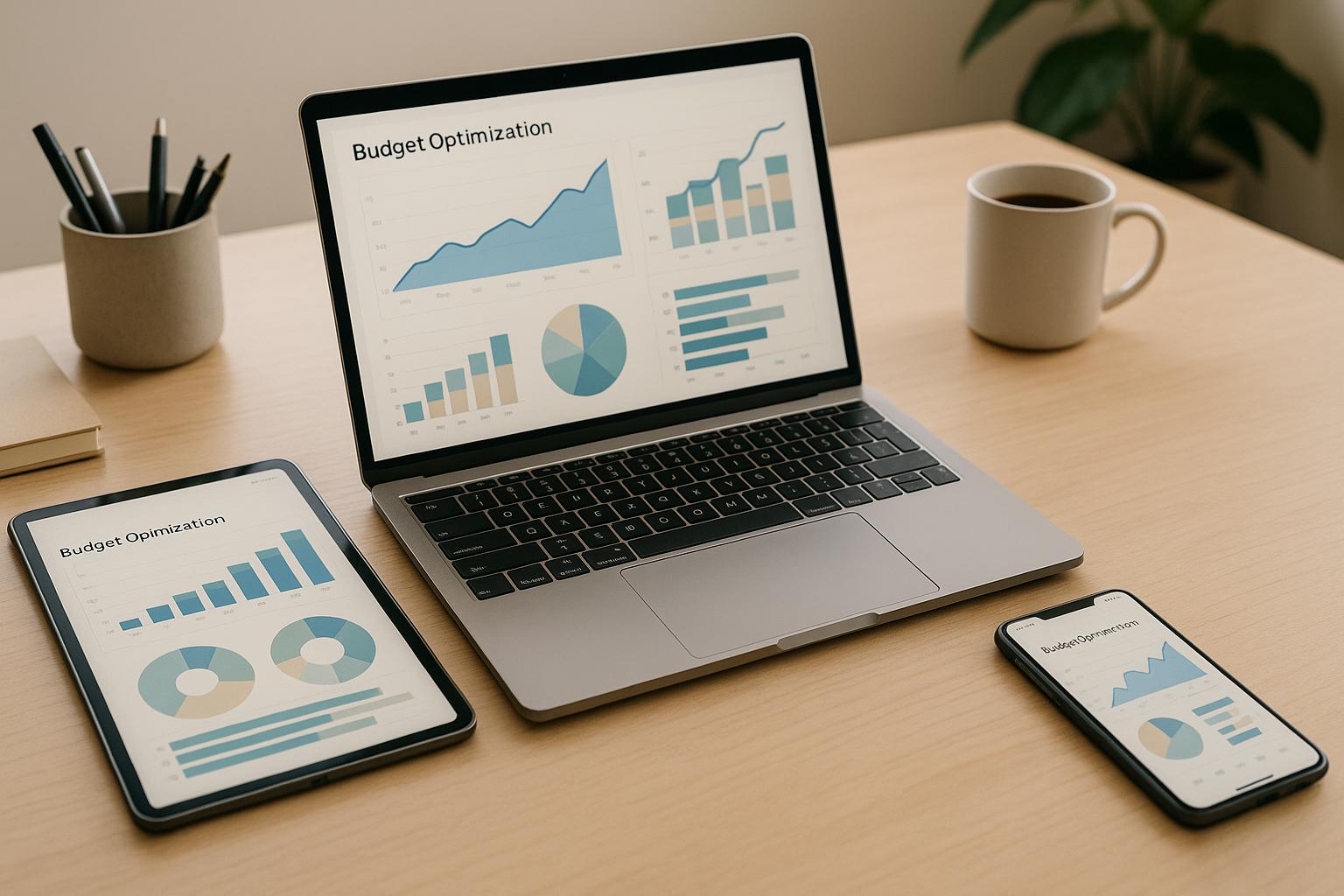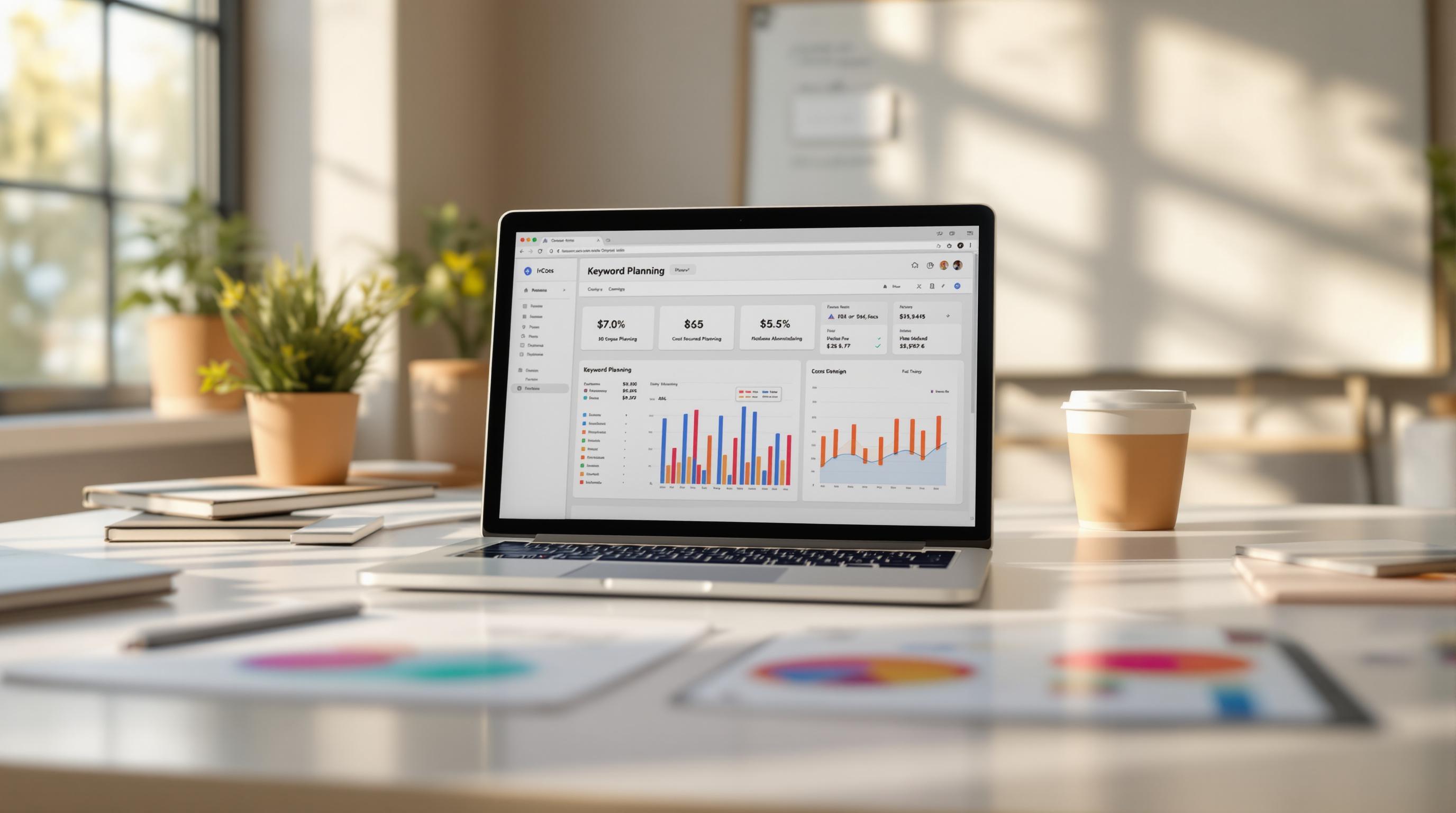Want better results from your PPC campaigns? Real-time segmentation can help.
Instead of relying on outdated, static audience groups, this approach uses live user data to create dynamic, tailored segments. It adjusts your targeting instantly based on user behavior, like browsing history or purchase intent. Here's why it works:
- Boosts Ad Relevance: Ads update in real time to match user interests, increasing click-through rates by 47%.
- Cuts Wasted Spend: Targets only high-intent users, reducing customer acquisition costs by 64%.
- Improves Conversions: Personalized messaging lifts conversion rates by over 20%.
Using Data Segments in Google Ads

What is Real-Time Audience Segmentation?
Real-time audience segmentation is a powerful method that uses AI to analyze customer data instantly, creating adaptable segments that update with every user interaction. It converts raw data into actionable insights on the fly. By continuously tracking behaviors, preferences, and interactions across multiple digital platforms - like website visits, purchase history, social media activity, email engagement, and app usage - it groups users based on current intent, past interactions, predictive behaviors, and demographics. This process enables highly personalized targeting tailored to individual actions.
Let’s dive into how real-time segmentation stands apart from its static counterpart.
Real-Time vs. Static Segmentation
Static segmentation works with fixed criteria, such as age or location, to form predefined groups that stay the same throughout a campaign. These segments often rely on outdated historical data, which may not reflect current customer behavior. On the other hand, real-time segmentation continuously updates based on live user activity, offering a constantly evolving understanding of your audience.
| Static Segmentation | Real-Time Segmentation |
|---|---|
| Based on fixed demographic factors | Analyzes live behavioral data |
| Relies on outdated historical insights | Processes real-time interactions |
| Segments stay static | Segments adapt dynamically |
| Limited ability to personalize | Enables highly personalized targeting |
| Requires manual updates | Automatically adjusts in real time |
By leveraging AI and predictive analytics, real-time segmentation ensures campaigns stay relevant and responsive. While static methods may work for stable audiences, dynamic segmentation is ideal for creating behavior-driven, personalized campaigns.
Key Features of Real-Time Segmentation
Real-time segmentation brings several standout capabilities to the table:
- These systems combine data from various sources, including behavioral, demographic, locational, and technological inputs, to instantly refresh audience segments.
- They use machine learning to identify patterns, predict preferences, and trigger automated updates based on user actions.
- Automated workflows adapt campaigns in real time, ensuring messaging aligns with shifting customer needs and market conditions.
For example, geolocation-based targeting can display personalized banners in the user’s preferred language, while automated workflows can re-engage users who show signs of inactivity. These dynamic adjustments help marketers deliver highly relevant campaigns, boosting engagement and improving ROI.
How Real-Time Segmentation Improves PPC Campaigns
Real-time segmentation is a game-changer for PPC campaigns, offering immediate insights that help fine-tune core performance metrics. Unlike static, traditional methods, this approach uses live data to create a responsive advertising environment that adapts to user behavior as it happens. With AI-powered segmentation, advertisers can achieve more precise targeting, smarter budget allocation, and ultimately, better conversions.
Increasing Ad Relevance Through Live Adjustments
Keeping ads relevant is critical, and real-time segmentation makes this possible by constantly analyzing user behavior and tweaking targeting parameters on the fly. It factors in live user activity, purchase history, and engagement metrics, ensuring ads align with shifting interests. For instance, if someone transitions from browsing winter coats to researching vacation packages, the system updates targeting to reflect this change in real time.
This dynamic approach also enables personalized content delivery based on where users are in their buying journey. For example, potential customers in the awareness stage might see educational content, while those ready to purchase receive conversion-focused messaging. AI-generated ad creatives play a significant role here, boosting click-through rates on platforms like Facebook and Google Ads by 47% and cutting cost per acquisition by 29%.
Cutting Wasted Ad Spend
One of the biggest benefits of real-time segmentation is reducing wasted ad spend. By filtering audiences more precisely, it ensures ads are shown only to users with genuine purchase intent. Continuous analysis of behavioral data distinguishes between high-intent shoppers and casual browsers. Metrics like conversion rates, return on ad spend (ROAS), and engagement time help identify traffic quality. When these indicators drop, automated workflows can pause or redirect spending toward better-performing segments.
For example, Sensorem, a direct-to-consumer brand, doubled its conversion rate by halting campaigns targeting low-engagement users. AI-driven segmentation also improves ad targeting by 26% and boosts conversion rates by 32%. Location-based targeting, such as dynamic geofencing, takes this a step further. In fact, 89% of marketers report higher sales after adopting location strategies, with PPC traffic converting 50% better than organic traffic when properly targeted.
Improving Conversion Rates with Personalized Messaging
Personalized messaging is another crucial advantage of real-time segmentation. By analyzing engagement signals in real time, the system tailors ads, offers, and creative elements to match individual preferences. Personalized landing pages alone can lift conversion rates by more than 20%, while customized email campaigns have been shown to increase open rates by 26%.
Take Cadbury, for example. The brand used hyper-personalized video ads based on user data, resulting in a 65% jump in click-through rates and a 33.6% boost in conversions. Similarly, a fashion retailer saw a 35% increase in sales by leveraging AI to identify style preferences, and a tech company raised its upsell rate by 20% by targeting customers primed for upgrades. Even dynamic calls to action can deliver a 20% lift in conversion rates. Studies show that brands using personalized strategies see up to 40% more revenue, making this approach a cornerstone of effective PPC campaigns.
Strategies for Implementing Real-Time Segmentation
Implementing real-time segmentation goes beyond simple demographic targeting. To make the most of this approach for PPC campaigns, you need strategies that combine behavioral insights with tried-and-true frameworks. Below are three effective methods to help you create campaigns that are responsive, agile, and focused on driving conversions.
Using the RFM Framework
The RFM framework is a powerful tool for segmenting customers based on three metrics: Recency (how recently a purchase was made), Frequency (how often a customer buys), and Monetary Value (how much they spend). This approach uses purchase data from your CRM to group customers into meaningful categories, such as "Loyal Customers", "At-Risk Customers", and "New Customers." For example, in December 2024, Sandstorm Digital recommended targeting these segments with tailored ad messaging.
Here’s how it works:
- Loyal Customers: These are high-frequency, high-spending customers. Ads for this group might focus on premium upgrades or exclusive offers.
- At-Risk Customers: These customers spend a lot but haven’t purchased recently. Re-engage them with discounts or reminders about products they’ve shown interest in.
- New Customers: Recent buyers with low purchase frequency. Encourage repeat purchases with personalized recommendations or introductory offers.
Dynamic remarketing can take these efforts further by showcasing complementary products or services based on customer behavior. By focusing on the top 20% of high-value customers, you can allocate your budget more effectively and improve ad performance.
While the RFM framework focuses on past purchase behaviors, behavioral retargeting zeroes in on real-time online activities.
Behavioral Retargeting Techniques
Behavioral retargeting is all about tapping into the actions users take online to gauge their purchase intent. For example, someone who’s been searching for specific products or using buyer-intent keywords can be directed to sales pages designed to convert. Meanwhile, users looking for general information might benefit from educational content that builds trust.
To make behavioral retargeting work effectively:
- Cap ad frequency to avoid overwhelming users.
- Regularly refresh ad creatives to keep them engaging.
- Use clear, action-oriented messaging that aligns with the user’s intent.
Cross-platform retargeting is another useful tactic. If a user visits your site but doesn’t convert, you can re-engage them on other platforms with messaging tailored to their previous interactions. Instead of promoting items they’ve already purchased, focus on complementary products that enhance their original choice.
Lifecycle-Based Targeting
Lifecycle-based targeting allows you to adapt your campaigns to where customers are in their journey - whether they’re just becoming aware of your brand, making a purchase, or becoming repeat buyers. When combined with real-time segmentation, this strategy becomes even more dynamic, adjusting as customers move between stages.
A helpful framework for this is the "Trigger, Message, Channel" approach:
- Trigger: Identify the event that signals a customer’s movement in their lifecycle (e.g., first purchase, cart abandonment, or a long period of inactivity).
- Message: Craft specific, relevant messaging for that stage.
- Channel: Choose the platform where the message will have the most impact.
For example, Google Ads offers tools like New Customer Value Mode and High Value Win-Back Mode to target new or lapsed customers effectively. These tools make it easier to bid strategically and re-engage high-value customers.
The results of combining lifecycle targeting with real-time segmentation can be impressive. Studies show dynamic segmentation can lead to 200% higher engagement rates, 45% lower acquisition costs, and threefold increases in conversion rates. However, implementing this approach requires a unified data collection system, machine learning to identify behavioral patterns, and automated workflows that adjust segments as customer behavior changes.
Interestingly, only 44% of marketers are currently using lifecycle-based strategies, making this an excellent opportunity for early adopters to stand out.
sbb-itb-89b8f36
Tools and Technologies for Real-Time Segmentation
The tools you choose for real-time segmentation can make or break your campaigns. To succeed, you need platforms that process data instantly, make automated decisions, and integrate seamlessly with your PPC systems.
Overview of Real-Time Segmentation Tools
At the heart of real-time segmentation are data processing platforms capable of handling massive volumes of information without lag. These tools must sync data in real time to ensure your decisions are based on current, actionable insights. Without this, you're left relying on outdated data, which can sabotage your campaign's success.
Machine learning plays a pivotal role here. It analyzes large datasets to uncover patterns that might otherwise go unnoticed. Businesses using AI for audience segmentation report impressive results: an 85% boost in marketing campaign success, a 73% rise in customer engagement, and a 64% drop in acquisition costs. To maximize these benefits, choose tools that analyze behavioral, contextual, and historical data - not just basic demographics.
Creative optimization tools are another must-have. They keep ads fresh by automatically updating visuals and copy based on performance, reducing ad fatigue and maintaining engagement. This is critical when the average PPC conversion rate hovers around 3.2%.
When evaluating tools, prioritize features like AI-driven automation, cross-platform integration, and comprehensive campaign analysis. Automation tools, for instance, can reallocate budgets to high-performing campaigns instantly. Customizable dashboards and competitor benchmarking add even more value, helping you track progress and refine strategies.
"PPC campaigns allow us to target highly specific audiences, from prospecting to reconnecting with loyal customers. It's a vital touchpoint for us to deliver our marketing message." - Tim Akers, Founder of Akers Digital
Scalability is another key factor. Your tool should handle growing campaigns, budgets, and platforms without costly upgrades. Testing the platform with real data during trial periods can help you determine if it meets your day-to-day needs.
Integration is equally important. Look for tools with flexible APIs, pre-built connectors for major platforms, and real-time data synchronization. These features ensure your segmentation tools work seamlessly with your existing systems.
Using the Top PPC Marketing Directory

To streamline your search for the right tools, the Top PPC Marketing Directory offers a curated list of platforms tailored for real-time segmentation and PPC management. This resource saves you weeks of research by organizing tools based on specific functionalities like campaign management, bid management, and performance tracking.
For campaign management, the directory features tools that unify data collection across touchpoints, use AI tagging for automatic categorization, and integrate seamlessly with other systems. These capabilities are essential for strategies like behavioral retargeting and lifecycle targeting.
Bid management platforms in the directory often include machine learning for behavioral analysis, predictive analytics for audience forecasting, and real-time data enrichment. These features support dynamic budget allocation, a key component of effective segmentation.
Performance tracking tools help you measure the success of your segmentation efforts. Many offer customizable reports and enriched customer data, making it easier to score leads and prioritize them based on conversion potential.
The directory also provides transparent pricing comparisons, ranging from $20-$100/month for basic features to custom pricing for enterprise-level solutions. This helps you align your tool selection with your budget and performance goals.
When browsing, focus on tools with features like cross-device tracking, behavioral segmentation, and low-code interfaces. These make it easier to implement advanced strategies without requiring deep technical expertise. Additionally, tools with dynamic content personalization can adjust messaging in real time based on user behavior, directly improving conversion rates in your campaigns.
Measuring the Success of Real-Time Segmentation
Once your real-time segmentation tools are in motion, keeping an eye on key metrics ensures you're getting the most out of your investment. Without proper tracking, you risk missing valuable opportunities to fine-tune your strategy.
Key Performance Indicators
To gauge the success of your segmentation, focus on conversion-driven metrics rather than just traffic numbers. While impressions and clicks offer a surface-level view, metrics like conversion rate and cost per acquisition (CPA) tell you whether your segmented audiences are actually turning into paying customers.
- Click-through rate (CTR): This metric reveals how well your ads resonate with specific user groups. A higher CTR suggests that your segmented messaging is hitting the mark and engaging your audience effectively.
- Conversion rate (CVR): CVR paints the bigger picture by showing how many clicks lead to actual conversions. By dividing conversions by clicks for each segment, you can see which audiences are responding best. High-intent segments should naturally convert at higher rates than broader groups.
- Return on ad spend (ROAS): ROAS measures how much revenue you're earning for every dollar spent on ads. This is especially useful for comparing performance across different segments. Ideally, your high-value customer groups should deliver a significantly better ROAS than general audiences.
- Cost-per-click (CPC): Variations in CPC can highlight differences in audience value and competition. For instance, the average CPC for Google Ads in B2B is $3.33, but well-targeted campaigns often achieve lower costs due to improved relevance scores.
- Customer lifetime value (LTV) vs. customer acquisition cost (CAC): Comparing LTV and CAC helps you understand the long-term profitability of your segmentation strategy. Real-time segmentation should enable you to focus on segments with better LTV-to-CAC ratios, boosting your overall bottom line.
To ensure accurate tracking, set up conversion tracking in your ad platforms and use UTM codes for dedicated landing pages tailored to each segment. Given that consumers interact with an average of six touchpoints during their journey - nearly half engaging with more than four - precise tracking is critical.
Beyond these outcome-focused metrics, operational efficiency metrics provide deeper insights into how well your segmentation processes are functioning.
Segmentation Efficiency Metrics
While KPIs measure campaign results, efficiency metrics assess how effectively your segmentation system operates in real time. These metrics help pinpoint whether your segments are stable, actionable, and delivering meaningful differences in performance.
- Segment size fluctuation: Healthy audience segments should remain relatively stable, with natural growth or decline based on market trends. Large, sudden changes may indicate unstable criteria that need adjustment.
- Cross-segment movement rates: This metric tracks how often users shift between segments. High movement rates could signal overlapping definitions or the need for clearer targeting criteria. Regular monitoring can help refine your segmentation logic.
- Segment performance variance: If all segments perform similarly, it might mean your segmentation strategy isn’t creating enough distinction to justify the added complexity. Compare key metrics across segments to ensure meaningful differences exist.
- Budget allocation efficiency: Examine how your system distributes ad spend across segments. Ideally, more budget should flow to high-performing segments, while less is allocated to lower-performing ones.
- Response time metrics: Measure how quickly your segmentation tools adapt to changes in user behavior. For example, track the time it takes for a user to visit a specific product page and then be placed into the appropriate segment. Faster adjustments typically lead to better campaign outcomes.
A/B testing is a valuable way to validate your segmentation strategy. Compare segmented campaigns against broader targeting to see which approach performs better. This evidence can help justify ongoing investment in real-time tools.
Finally, keep an eye on impression share lost due to budget and impression share lost due to rank across segments. These metrics can reveal whether top-performing segments need additional budget or bid adjustments to reach their full potential.
Conclusion: Getting Results with Real-Time Segmentation
Real-time segmentation takes PPC campaigns to a whole new level by turning broad, general strategies into highly targeted efforts that respond to user behavior instantly. Brands leveraging AI-powered segmentation have reported impressive results - up to a 140% boost in ROAS and a 33% increase in product sales. These numbers highlight the tangible advantages of adopting this approach.
To succeed, you need a system that combines unified data collection, AI-driven audience profiling, and automated campaign adjustments. The key lies in tools that can analyze behavioral patterns in real-time, dynamically redefine audience segments, and automatically tweak campaigns. This kind of automation allows you to shift your focus from repetitive tasks to strategic areas like creativity, A/B testing, and data analysis.
"Before, being a stellar performer was enough to excel as a PPC specialist. Now you are also required to be a great strategist, and automation helps you with that. So don't get bogged down in manual tasks, leverage automation to focus on creativity, A/B testing, optimization, and data analysis." - Diana-Alina Aldea, Creatopy
This shift toward predictive modeling and behavioral scoring is reshaping PPC optimization. Instead of reacting to past user actions, campaigns can now anticipate what users are likely to do next and position ads accordingly. This proactive strategy not only minimizes wasted ad spend but also increases the chances of converting high-intent users, making every dollar count.
Need help finding the right tools? Check out the Top PPC Marketing Directory, which offers a curated list of resources for real-time segmentation and PPC optimization. From bid management to performance tracking, this directory connects you with the tools necessary to build a robust segmentation system.
Real-time segmentation creates a self-improving cycle, continuously refining audience insights by analyzing new data and adjusting targeting strategies. Your algorithms should handle these updates automatically, ensuring your campaigns remain relevant even as market trends and user behaviors shift.
Investing in real-time segmentation delivers more than just better ROI - it strengthens your connection with customers. By delivering tailored messages at the perfect moment, you not only optimize performance but also build a competitive edge that lasts.
FAQs
What’s the difference between real-time and traditional audience segmentation in PPC campaigns?
Real-time segmentation takes audience targeting to the next level by using live data to adjust on the fly. Unlike the traditional static approach, which relies on fixed criteria like demographics or past behaviors, this method adapts to users' current actions and preferences. The result? Ads that feel more relevant and connect better with the audience.
By leveraging real-time segmentation, marketers can serve highly personalized ads, refine bidding strategies in real time, and tweak campaigns as they run. This not only drives better engagement and conversion rates but also maximizes your ROI by ensuring your message hits the right people at the perfect moment.
What are the best tools for using real-time segmentation in PPC campaigns?
Real-time segmentation has the power to elevate your PPC campaigns by helping you connect with the right audience at just the right moment. To make this happen, AI-powered tools such as Google Ads and SEMrush come in handy. These platforms dig into user behavior, offering actionable insights that fine-tune your targeting and enhance campaign performance.
For an extra layer of precision, tools like Adext AI and Smartly.io allow marketers to zero in on specific demographics and dynamically tweak campaigns as needed. By using these advanced solutions, you can make your ads more relevant, improve click-through rates, and get the most out of your ROI - keeping your campaigns sharp and competitive.
How does real-time segmentation help evaluate the success of PPC campaigns?
Real-time segmentation lets you dive into your PPC campaign’s performance by breaking down key metrics like click-through rate (CTR), conversion rate, and return on ad spend (ROAS) across different audience segments. This gives you a clear picture of which groups - defined by demographics, behaviors, or interests - are delivering the strongest results.
By pinpointing these top-performing segments, you can better allocate your ad budget and fine-tune your messaging to connect more effectively with these audiences. Platforms like Google Ads and Google Analytics provide tools to monitor and analyze these metrics in real time, allowing you to make quick tweaks that boost performance and drive higher ROI. Regularly checking these insights ensures your campaigns remain sharp and aligned with your objectives.


